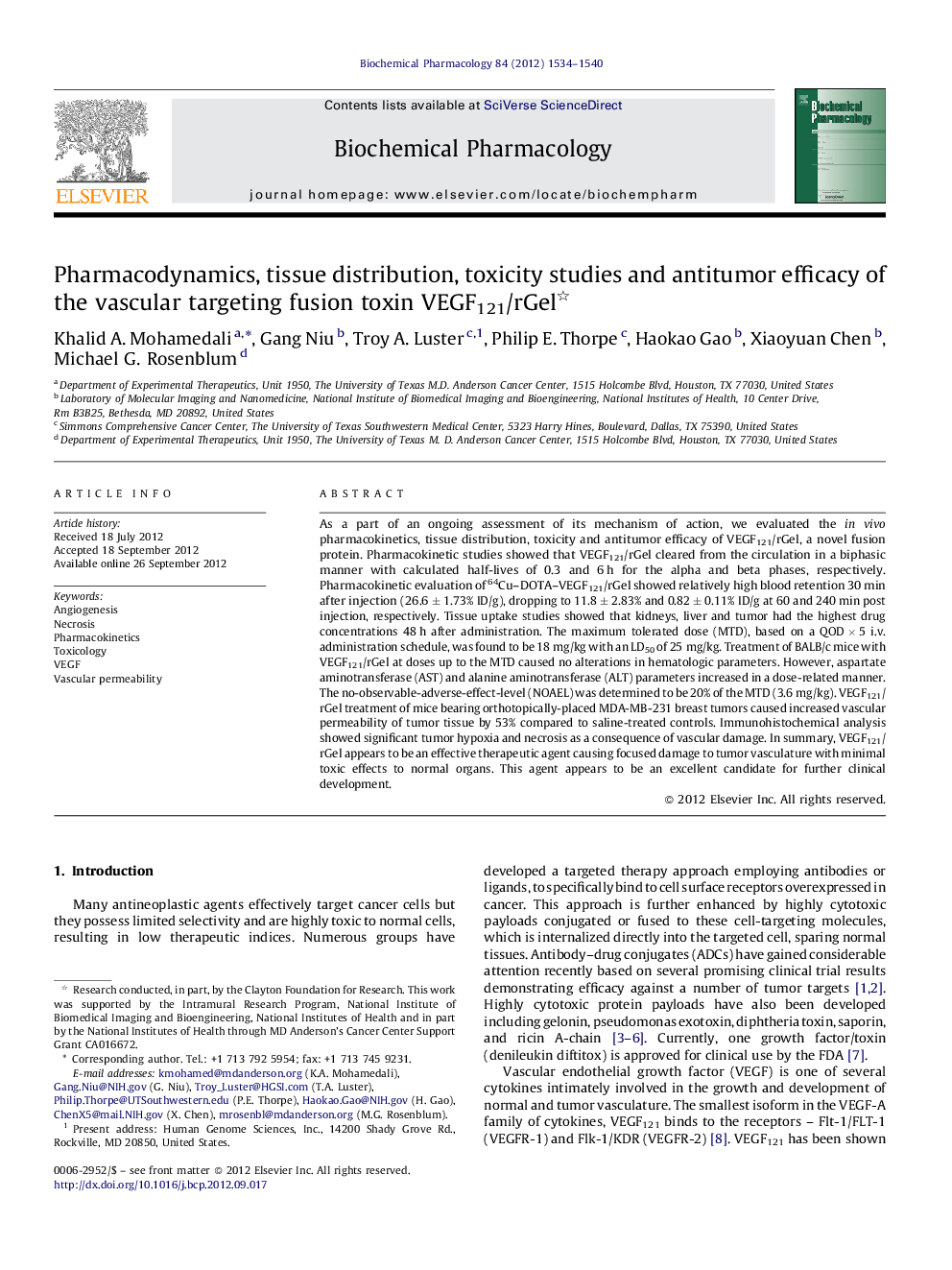| Article ID | Journal | Published Year | Pages | File Type |
|---|---|---|---|---|
| 5823850 | Biochemical Pharmacology | 2012 | 7 Pages |
Abstract
As a part of an ongoing assessment of its mechanism of action, we evaluated the in vivo pharmacokinetics, tissue distribution, toxicity and antitumor efficacy of VEGF121/rGel, a novel fusion protein. Pharmacokinetic studies showed that VEGF121/rGel cleared from the circulation in a biphasic manner with calculated half-lives of 0.3 and 6 h for the alpha and beta phases, respectively. Pharmacokinetic evaluation of 64Cu-DOTA-VEGF121/rGel showed relatively high blood retention 30 min after injection (26.6 ± 1.73% ID/g), dropping to 11.8 ± 2.83% and 0.82 ± 0.11% ID/g at 60 and 240 min post injection, respectively. Tissue uptake studies showed that kidneys, liver and tumor had the highest drug concentrations 48 h after administration. The maximum tolerated dose (MTD), based on a QOD Ã 5 i.v. administration schedule, was found to be 18 mg/kg with an LD50 of 25 mg/kg. Treatment of BALB/c mice with VEGF121/rGel at doses up to the MTD caused no alterations in hematologic parameters. However, aspartate aminotransferase (AST) and alanine aminotransferase (ALT) parameters increased in a dose-related manner. The no-observable-adverse-effect-level (NOAEL) was determined to be 20% of the MTD (3.6 mg/kg). VEGF121/rGel treatment of mice bearing orthotopically-placed MDA-MB-231 breast tumors caused increased vascular permeability of tumor tissue by 53% compared to saline-treated controls. Immunohistochemical analysis showed significant tumor hypoxia and necrosis as a consequence of vascular damage. In summary, VEGF121/rGel appears to be an effective therapeutic agent causing focused damage to tumor vasculature with minimal toxic effects to normal organs. This agent appears to be an excellent candidate for further clinical development.
Keywords
Related Topics
Health Sciences
Pharmacology, Toxicology and Pharmaceutical Science
Pharmacology
Authors
Khalid A. Mohamedali, Gang Niu, Troy A. Luster, Philip E. Thorpe, Haokao Gao, Xiaoyuan Chen, Michael G. Rosenblum,
